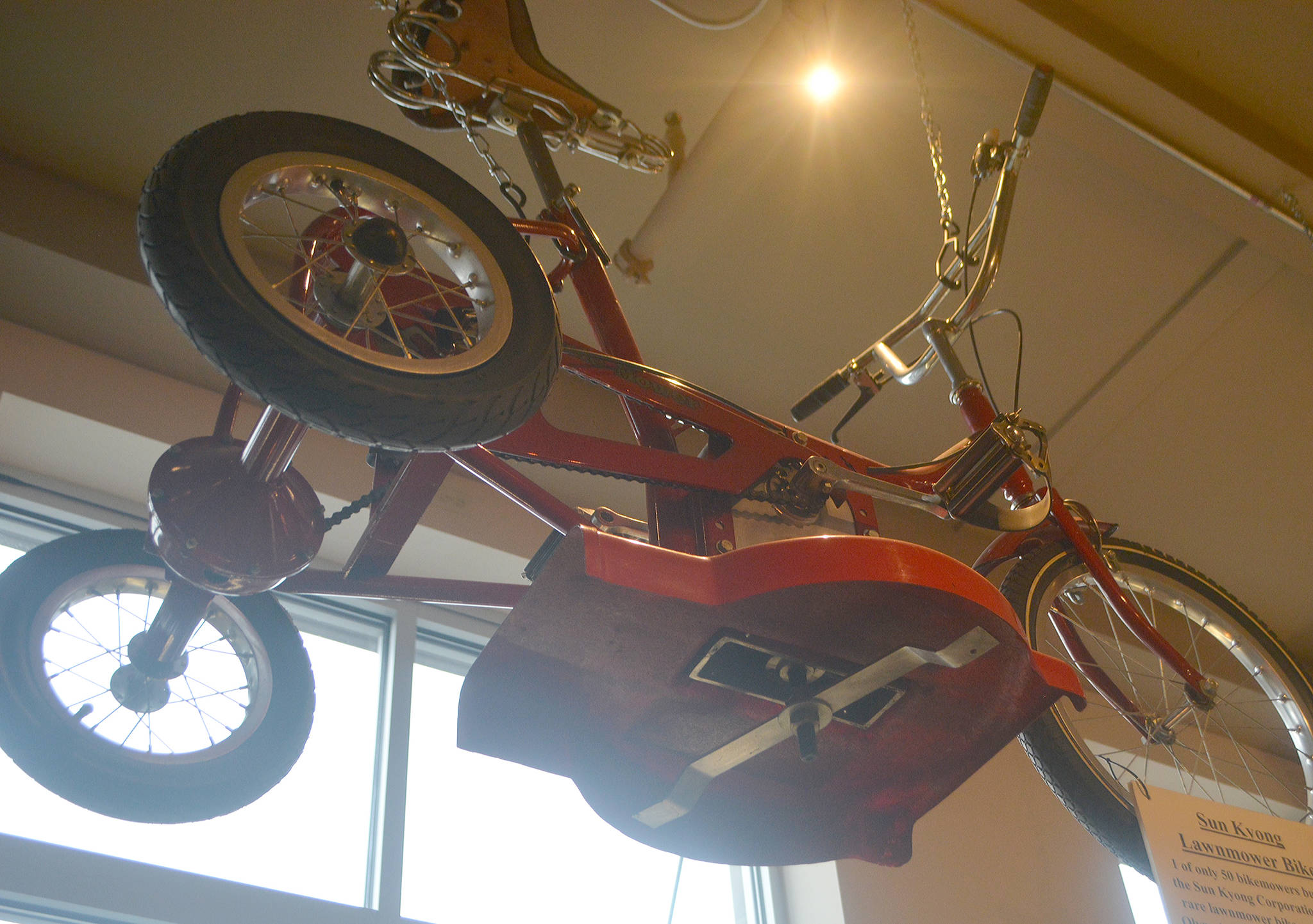If you’re looking for something to do with your children stuck in the house due to COVID-19, check out the Cycle Museum on Winslow Way.
It’s full of fascinating history – not only about cycling, but also its relation to world events.
“If you’re nervous about coming in you also can go to our website,” owner Paul Johnson said.
There are dozens of interesting artifacts, but one of the more well-known ones is Lance Armstrong’s yellow jersey for winning the Tour de France in 2001. Armstrong, who signed the jersey, won the event seven times, but had the titles stripped away for using performance-enhancing drugs. In the record books, there is officially no winner of those races.
There are two bikes linked to the 1996 Olympics. They were part of “Project ‘96,” a technological effort to assure victory in Atlanta that summer. Former presidential candidate Ross Perot was one of the investors in the $40 million effort. The rider of one of the bikes could attain just a 3.5 pound drag at 30 miles per hour, compared with 9 on a regular bike.
Speaking of the Olympics, Jeanne Omelenchuk attained that goal three times in speed skating. A bike and jersey she used are in the museum, as she also raced bicycles “just for fun.”
Johnson, who has owned the business for 11 years, said all the bikes in the museum are not his. Some are on loan from friends. Some are from the previous owner as the museum goes way back, moving to Bainbridge Island from Kingston in 1985.
Johnson rotates about a dozen items each year in and out of the museum. “Like any collection it gets a life of its own,” he said.
His wife, Jaime Amador, is a co-owner and also works there. They both love to ride around Bainbridge Island. She has a 1972 classic while “I like high-tech,” – one of the first carbon-fiber bikes made.Johnson said he used to race, but he took off the speedometer years ago and now just likes to “enjoy the ride.”
He worked for years for the previous owner, who decided to retire.
“I kinda wanted to still have a job,” he said of why he and Amador decided to buy it, adding he didn’t want to look for different work.
COVID has brought some good and bad for the store.
“We sold out of everything we had by the end of April,” he said, adding people who had been trapped in their homes wanted to get out and do something. “But getting new bikes to sell has been a problem since May.”
President Trump’s trade war with China didn’t help, he added. Shipments weren’t allowed off cargo ships. “It was a nightmare,” he said.
The bikes he was getting were trade-ins. Then a few weeks ago he got some new adult bikes. And he got his first kids’ bike since June only recently.“They’re starting to trickle in,” he said, adding his website has helped “attract people from all over.”
Last summer Johnson wasn’t able to rent bikes to tourists coming over on the ferry. “We don’t want to attract tourists now” because of the coronavirus, he said.
Other museum highlights
*A lawnmower bike, one of only 50 made by Sun Kyong.
*A bike made of wood in Portland, Ore., a 2017 Renovo Aerowood.
*An adult tricycle that set a record time for a 200-mile race. Archie Weaver did that in 1935.
*A 1926 Applehaus, built specifically for Frank Bartell, who competed in 85, six-day races in his life. He also set a speed record of 85 mph in 1935.
*A 1947 tandem bike used in southern Britain for both race tracks and bike paths.
*A bike made specifically for Greg LeMond, a Tour de France winner. Only six of the 1991 carbon framed “6 Monsters” were made, but his moutain bike was just for one race in Wisconsin.



